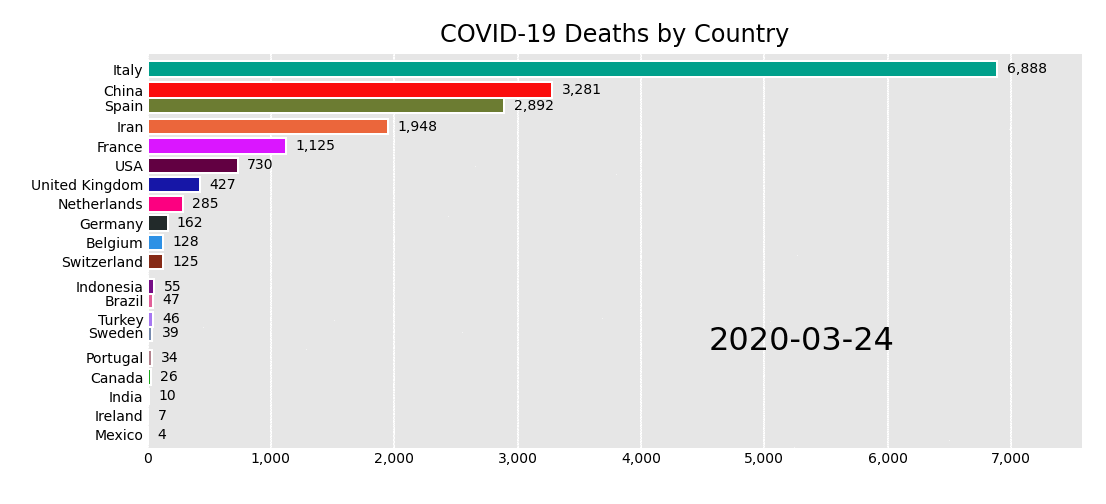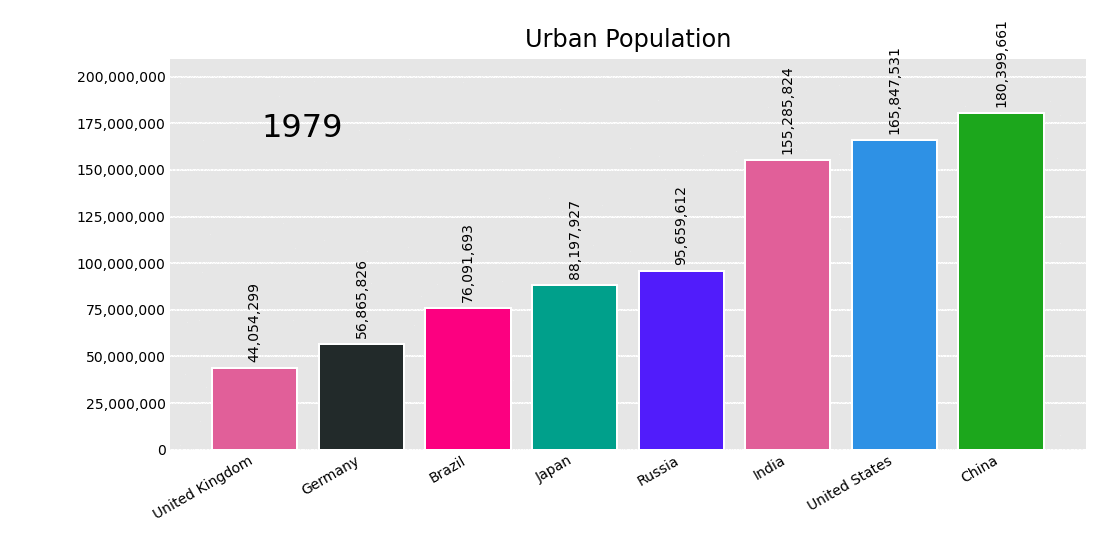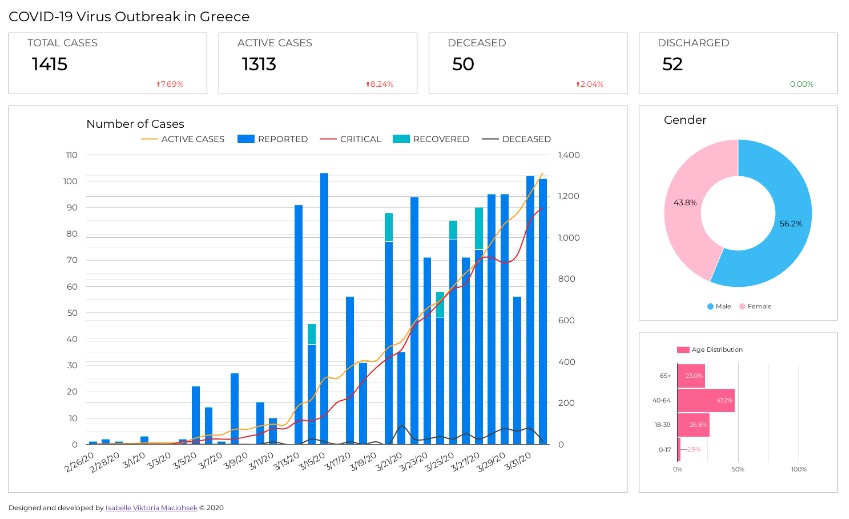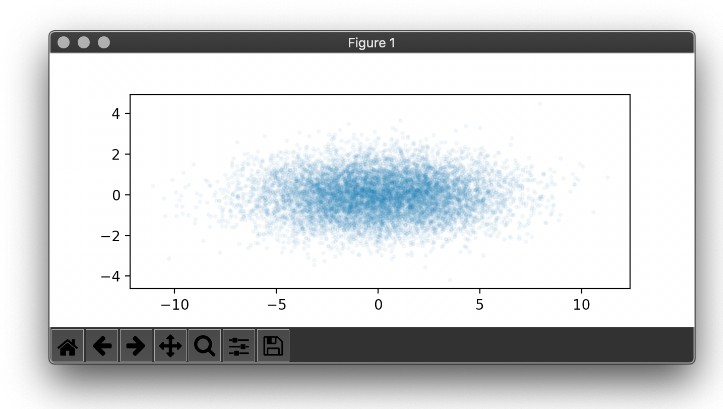Bar Chart Race
Make animated bar chart races with matplotlib.

Installation
Install with pip install bar_chart_race
Usage
Must begin with a pandas DataFrame containing 'wide' data where:
- Every row represents a single period of time
- Each column holds the value for a particular category
- The index contains the time component (optional)
The data below is an example of properly formatted data. It shows total deaths from COVID-19 for the highest 20 countries by date.

Main function - bar_chart_race
There is one main function, bar_chart_race, which we use to recreate the above video. All parameters are shown with their default value except for filename and title.
>>> import bar_chart_race as bcr
>>> df = bcr.load_dataset('covid19')
>>> bcr.bar_chart_race(
df=df,
filename='covid19_horiz_desc.mp4',
orientation='h',
sort='desc',
label_bars=True,
use_index=True,
steps_per_period=10,
period_length=500,
figsize=(6.5, 3.5),
cmap='dark24',
title='COVID-19 Deaths by Country',
bar_label_size=7,
tick_label_size=7,
period_label_size=16,
fig=None)
Save animation to disk or return HTML
Leave the filename parameter as None to return the animation as HTML. You can subsequently embed the animation into a Jupyter Notebook with the following.
In [1]: bcr_html = bcr.bar_chart_race(df=df, filename=None)
In [2]: from IPython.display import HTML
In [3]: HTML(bcr_html)
Use vertical bars and limit to top n_bars
Make bars vertical by setting orientation to 'v'. Use n_bars if you want to limit the number of bars. The bars will transition on and off the graph.
>>> df = bcr.load_dataset('urban_pop')
>>> bcr.bar_chart_race(
df=df,
filename='videos/urban_vert_asc.gif',
orientation='v',
sort='asc',
n_bars=8,
title='Urban Population')











